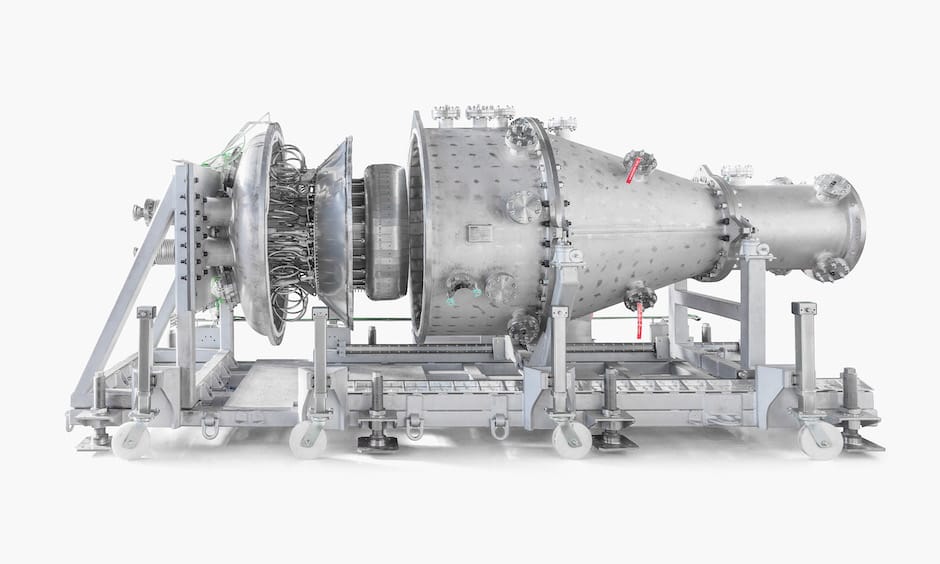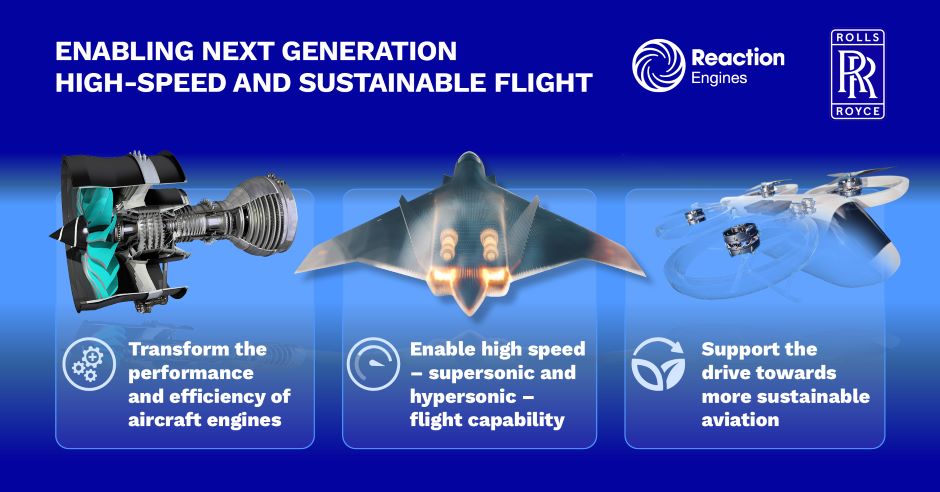
Reaction Engines is the company responsible for SABRE (Synergetic Air-Breathing Rocket Engine) which they describe as a new class of aerospace propulsion with the potential to provide air-breathing thrust from standstill on the runway to speeds above Mach 5 in the atmosphere. The scalability of SABRE allows for multiple applications whilst delivering the fuel efficiency of a jet engine with the high-speed capability of a rocket.
Reaction tests SABRE precooler at Mach 5 conditions
Reaction Engines’ proprietary pre-cooler technology is key to SABRE. As previously reported in The Engineer, the pre-cooler heat exchanger consists of thousands of thin-walled tubes through which coolant is passed, giving a high surface-to-weight ratio that quenches extreme airflow temperatures in a fraction of a second. This means that SABRE’s actual jet engine element receives the cool ambient air it needs to function efficiently.
As part of the agreement both companies will investigate applications for Reaction Engines’ thermal management technology within civil and defence aerospace gas turbine engines and hybrid-electric systems.
“We have been working closely with Reaction Engines for the past two years, including exploring the potential of high-Mach systems for defence applications, and I am delighted that we are able to strengthen that relationship,” said Mark Thompson, Director of Global Strategy & Business Development, Rolls-Royce.

“Reaction Engines’ thermal management skills, added to our suite of existing technologies and capabilities, will further assist us as we explore opportunities in supersonic and hypersonic aviation,” Thompson added. “Building on our many decades of innovation, we will also explore the use of Reaction Engines’ technology within our aerospace gas turbines and its potential application in future hybrid-electric propulsion systems, as we look to make flying ever more efficient and sustainable.”
Additionally, Rolls-Royce is making a further investment in Reaction Engines as part of a wider funding round. The two companies have been working together since 2018, including on the first phase of a UK Ministry of Defence contract to undertake design studies, research, development, analysis and experimentation related to high-Mach advanced propulsion systems.
“This strategic partnership is about developing market ready applications for Reaction Engines’ technology in next generation engines and is a significant step forward for our technology commercialisation plans,” said Mark Thomas, Chief Executive of Reaction Engines. “Our proprietary heat exchanger technology delivers incredible heat transfer capabilities at extremely low weight and a compact size. We look forward to expanding our international collaboration with Rolls-Royce…to bring to market a range of applications that will transform the performance and efficiency of aircraft engines, enable high speed – supersonic and hypersonic – flight and support the drive towards more sustainable aviation through innovative new technologies.”





Swiss geoengineering start-up targets methane removal
No mention whatsoever about the effect of increased methane levels/iron chloride in the ocean on the pH and chemical properties of the ocean - are we...